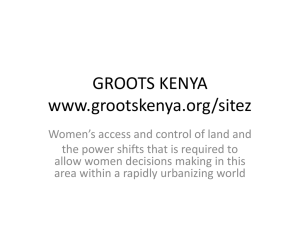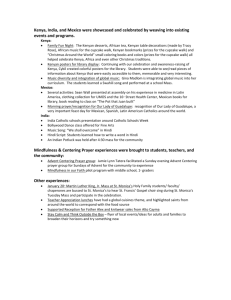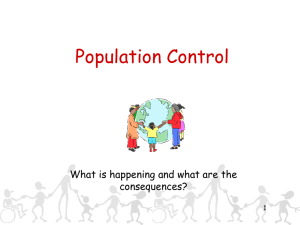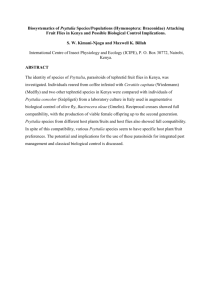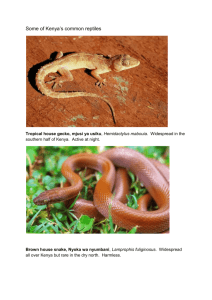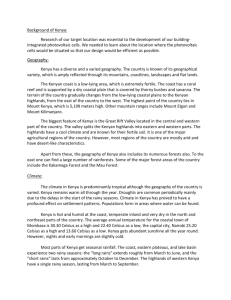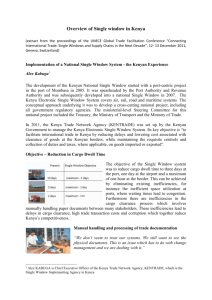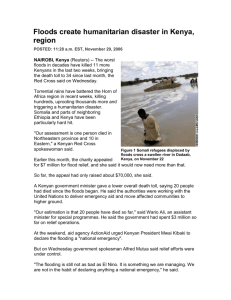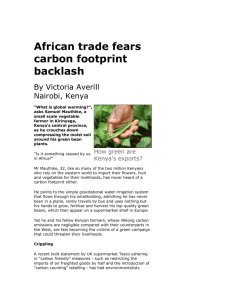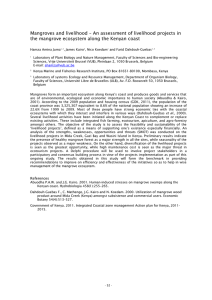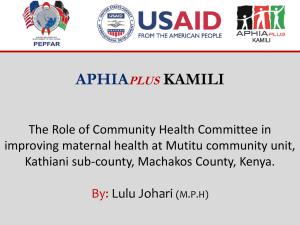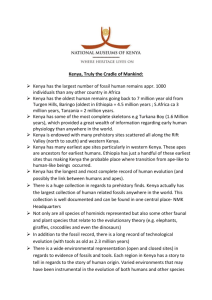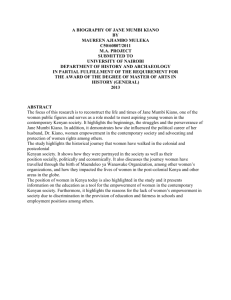Kenya The child-to-child survey-“Let`s Go to School
advertisement
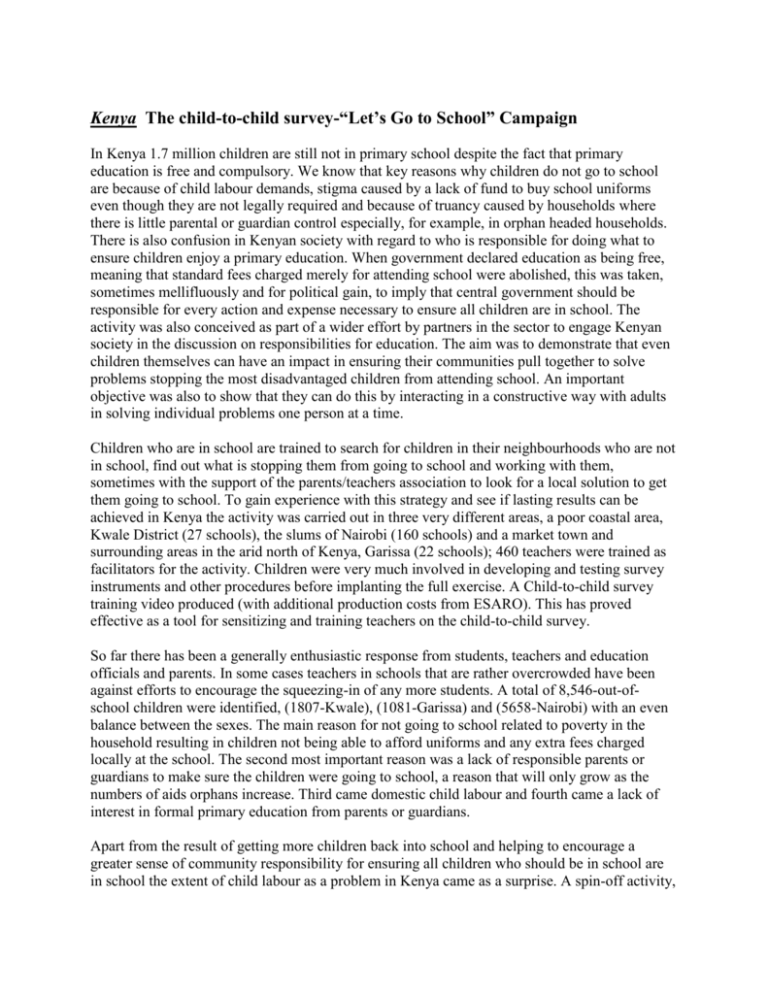
Kenya The child-to-child survey-“Let’s Go to School” Campaign In Kenya 1.7 million children are still not in primary school despite the fact that primary education is free and compulsory. We know that key reasons why children do not go to school are because of child labour demands, stigma caused by a lack of fund to buy school uniforms even though they are not legally required and because of truancy caused by households where there is little parental or guardian control especially, for example, in orphan headed households. There is also confusion in Kenyan society with regard to who is responsible for doing what to ensure children enjoy a primary education. When government declared education as being free, meaning that standard fees charged merely for attending school were abolished, this was taken, sometimes mellifluously and for political gain, to imply that central government should be responsible for every action and expense necessary to ensure all children are in school. The activity was also conceived as part of a wider effort by partners in the sector to engage Kenyan society in the discussion on responsibilities for education. The aim was to demonstrate that even children themselves can have an impact in ensuring their communities pull together to solve problems stopping the most disadvantaged children from attending school. An important objective was also to show that they can do this by interacting in a constructive way with adults in solving individual problems one person at a time. Children who are in school are trained to search for children in their neighbourhoods who are not in school, find out what is stopping them from going to school and working with them, sometimes with the support of the parents/teachers association to look for a local solution to get them going to school. To gain experience with this strategy and see if lasting results can be achieved in Kenya the activity was carried out in three very different areas, a poor coastal area, Kwale District (27 schools), the slums of Nairobi (160 schools) and a market town and surrounding areas in the arid north of Kenya, Garissa (22 schools); 460 teachers were trained as facilitators for the activity. Children were very much involved in developing and testing survey instruments and other procedures before implanting the full exercise. A Child-to-child survey training video produced (with additional production costs from ESARO). This has proved effective as a tool for sensitizing and training teachers on the child-to-child survey. So far there has been a generally enthusiastic response from students, teachers and education officials and parents. In some cases teachers in schools that are rather overcrowded have been against efforts to encourage the squeezing-in of any more students. A total of 8,546-out-ofschool children were identified, (1807-Kwale), (1081-Garissa) and (5658-Nairobi) with an even balance between the sexes. The main reason for not going to school related to poverty in the household resulting in children not being able to afford uniforms and any extra fees charged locally at the school. The second most important reason was a lack of responsible parents or guardians to make sure the children were going to school, a reason that will only grow as the numbers of aids orphans increase. Third came domestic child labour and fourth came a lack of interest in formal primary education from parents or guardians. Apart from the result of getting more children back into school and helping to encourage a greater sense of community responsibility for ensuring all children who should be in school are in school the extent of child labour as a problem in Kenya came as a surprise. A spin-off activity, “The Domestic Child Workers Study” was launched as a follow up which will continue to expand the exposure of the Kenyan public to this issue. The results of this study will be disseminated regionally in 2005. The activity is at a stage poised for a wide adoption across the country that should result in a major impact on pushing enrolments higher. The small start-up exercise did generate widespread local interest and discussion on the issue of children’s rights to a primary education and the concomitant responsibilities various elements of society have ensure this right is enjoyed. A wider deployment in 2005 will likely lead to a greater consensus on the wider responsibility to deliver education to young Kenyans – that it is not only the government but also the community, parents among other key partners. The programme is at the stage where the start-up exercise has got a positive rating from the Ministry of Education and international partners in the education sector such as DFID and World Bank. A number of civil society organizations are keen to expand the geographic coverage of the exercise in 2005 including the Kenya Girl Guides Association, Kenya Scouts, MYSA, and the Childlife Trust. We have found that there is a tendency in some cases for children to slip back out of school after an initial enthusiastic return. The strategy focuses its main efforts at a sustained return on encouraging the parent teacher associations to take responsibility for ensuring the identified children stay in school. The reality in many cases is that this body is not strong. The lesson learned for 2005 is to follow-up on this issue and focus more strongly on encouraging a stronger community in the associations.


